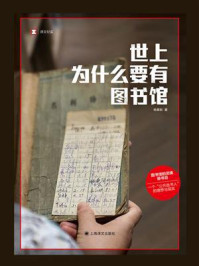




The Universal Declaration of Human Rights (UDHR) laid the foundation for all subsequent human right acts. UDHR presents 30 articles on human beings’ civil, social, political, cultural, and economic rights (United Nations, 1948). According to Heilman (2009), UDHR acts to “assert a belief in a universal moral world order, one where all humans are equally entitled to human rights” (p. 51). Kirkwood (2001) proposed that the philosophical bases of global education are equalities among human beings regardless of their diverse backgrounds, determination of human behaviors culturally but not racially, human families’ possession of basic human rights, and moral purpose within global education. The philosophy of global education is in accordance with the essence of UDHR (Kirkwood, 2001).
Tucker (1996) claimed that the conception of global education was developed in 1968 from a pioneering report by the Foreign Policy Association. It was sponsored by the U.S. Office of Education and named An Examination of Objectives and Priorities in International Education in U.S. Secondary and Elementary Schools . The authors of the report, Lee F. Anderson and James M. Becker, together with other such prominent international educators and social scientists as Chadwick F. Alger, Kenneth E. Boulding, Robert A. Harper, Bob G. Henderson, Herbert C. Kelman, Edith W. King, Charles A. McClelland, Roger G. Mastrude, Howard D. Mehlinger, Jerry R. Morre, Donald N. Morris, and Robert C. North, contributed to the November 1968 issue of Social Education , called International Education for the Twenty-First Century (Tucker, 1996). It is significant that “this publication rejected the idea of international education as a study of a collection of nations. Instead, it proposed a focus on problems and issues that cut across national boundaries” (Tye, 2009, p. 7). The scholars declared that “revolutionary changes on a global scale had outpaced a static curriculum and that the concept of ‘international’ was losing its accuracy and utility”(Tucker, 1996, p. 47). Tucker (1996) asserted that a new term was needed at that time to describe the changes, and global education was coined accordingly. It was the right time to educate a person as a responsible citizen of the world as well as a citizen of the country.
In 1991, the Association for Supervision and Curriculum Development (ASCD) published its yearbook, which was titled Global Education: From Thought to Action , edited by Kenneth A. Tye. The authors of this work included Lee F. Anderson, Barbara Benham Tye, Steven L. Lamy, James Becker, Jane A. Boston, Ida Urso, Jan L. Tucker, Charlotte C. Anderson, and Toni Fuss Kirkwood. They first defined the meaning of global education and explained its importance in school; next, they offered assistance to those who planned to develop their own global education programs; the last and the most complex purpose of the book was to show how global education served as a medium to bring about school improvements like interdisciplinary planning and teaching, the development of critical thinking abilities, service learning, cooperative learning, and intrinsic motivation of student learning (Tye, 1991). Tye (1991) called on Americans to react to the realities of that time, such as the end of the Cold War and the appearing of new democratic life in Eastern Europe, to give up separateness and to support the interdependence and cooperation among nations.
In 2009, Peter Lang published a book named Visions in Global Education: The Globalization of Curriculum and Pedagogy in Teacher Education and Schools , edited by Toni Fuss Kirkwood-Tucker. The book contained a comprehensive study about a history, a development, and a philosophy of global education. Aside from the descriptions of America’s global education, the book also presented the development of global education in Canada and Russia. It was a summary of the current research and projects, and it provided pedagogy and possibilities in the postmodern world (Kirkwood-Tucker, 2009).
According to Gaudelli (2003) and Tye (2009), the U.S. global education movement began in the 1960s, moved forward in the 1970s, and reached its golden age in the 1980s and 1990s. This golden age is also when it came under attack. Tye indicated that conservatives “reject the notion that there is any kind of equivalence in the world; the United States is superior in all ways” (p. 20). They regarded global education as part of the left-wing agenda for social change and anti-American in orientation (Gaudelli, 2003). Their criticism was that the teachers over-introduced beliefs like atheism and that the textbooks of global education lacked practical content. However, the research of the 1980s and the 1990s is still compelling, and there is a growth trend in the research field.
Baliles (1989) claimed that the world is becoming smaller. Information technology and fiber-optic communication link every corner of the globe. A popular product may include parts produced in five different countries and fabricated in a sixth. New markets and opportunities may occur instantly. In this competitive and ever-changing world, success is accompanied with those“who most quickly anticipate, adapt, and respond” (Baliles, 1989, p. iv). Baliles suggested that the government must prepare the age of globalization and bring an international perspective to daily life, such as understanding foreign nations and the peoples in other countries and learning the foreign languages of business.
In 1989, the American Council on Education published Richard D. Lambert’s report, International Studies and the Undergraduate . Atwell (1989) called it a milestone to understand undergraduate language and international programs. Higher education should commit to “provide opportunities for American students to become proficient in foreign languages and attain the global awareness they need as responsible citizens” (Atwell, 1989, p. xi). Lambert (1989) conducted the research in four components. The first analysis addressed the benefits of the study abroad program. Students changed their perceptions on stereotypes, improved working habits, and became immersed in foreign cultures; however, there was not enough research on academic benefits, such as the positive effect of instruction in their overseas studies (Lambert, 1989). The second analysis was on foreign language instruction. Lambert claimed that foreign language courses are the beginning of international studies, and foreign language related courses took up half of all the international-oriented courses offered. The third study introduced the topic of international studies by using world studies curriculum at Eisenhower College. The topics included “environment, food, health, energy, religious issues, relations among states, war and armaments, international monetary and trade arrangements, human rights, racial and ethnics, and population” (Lambert, 1989, p. 107). Lambert declared that international studies are grouped with elective courses, and the general education’s contribution to it is only modest. The fourth study was on institutional priorities. Research results showed the importance of cooperation among different divisions of an institution. The study suggested that “the internationalizing of undergraduate education still has a long way to go” (Lambert, 1989, p. 153). The stage of international education at that time was still on comparative studies between nations. Foreign languages were the primary courses and study abroad was the main program in international education.
The Association of American Colleges and Universities (AAC&U, 2007) asserted that “learning about cultures and social structures dramatically different from one’s own is no longer a matter just for specialists. Intercultural learning is already one of the new basics in a contemporary liberal education, because it is essential for work, civil society, and social life” (p. 15). AAC&U promoted intercultural learning in global education, and it suggested incorporating global courses within liberal education.
Some researchers also addressed global education initiatives across campuses. Genelin (2005) developed a Global Education Initiatives Faculty and Administrator Questionnaire with the assistance of a panel of experts including two administrators and 10 faculty members. It was a 42-item, 5-point Likert-type scale questionnaire with an open-ended question in the end. Items 1 to 4 and 35 to 42 addressed the category of institutional support, such as a college-wide task force/committee to advance global education initiatives and a college funding program to support faculty’s participation. Items 7 to 13 addressed the category of internationalizing curriculum, such as a requirement of a foreign language and courses with global focus for graduation. Items 5, 6, and 17 to 24 addressed the category of campus and community activities to increase global awareness, such as a college’s sponsorship of community forums and extracurricular activities with a global focus. Items 14 to 16 and 25 to 34 addressed the category of international experience and cooperation, such as a college’s promotion of the study abroad program and faculty’s travel to international conferences. The final open-ended question asked about the three most critical barriers to implementation of global education initiatives. Genelin sent out the survey to 170 academic administrators, technical, and general education faculty members randomly selected from Minnesota State Colleges and Universities and received 106 responses. Data analysis showed that the highest mean score for all groups was in the category of campus and community activities to increase global awareness. The mean scores for technical faculty were lower than general education faculty. Analysis of the final open-ended question responses indicated that (a) lack of money, (b) lack of global education notions in college mission statements, and (c) lack of time within the curriculum were the main obstacles that might prevent or limit the implementation of global education initiatives.
To be an advocate of global education, a college professor must put the theory into practice and act on it. Jean-Francois (2010) conducted research on perceptions of global education initiatives by U.S. college professors. In addition to his self-developed Faculty Motivational Factor toward Global Education Survey and a demographic questionnaire, he adopted Hett’s (1993) GMS and Genelin’s (2005) Global Education Initiatives Faculty and Administrator Questionnaire to gather data. A total of 418 college professors responded to the survey. Research results suggested that more than two-thirds of the participants had at least experienced another culture other than the United States. Motivational factors and worldview magnitudes were statistically significant predictors of the perceptions of global education initiatives by U.S. college professors. Jean-Francois provided recommendations for practice. The recommendations included introducing global practices and policies in all university and college educational functions; embodying global education in the mission statement; modifying vision, mission, strategic goals, and administrative policies and procedures to support global education; creating an institution-wide interdisciplinary council; creating incentive programs and platforms for academic exchanges; recognizing global initiatives and achievement; revising and adapting curricula with global perspectives; mentoring and engaging professors in international scholarships; and supporting global activities on and off campus. College professors are the direct initiators of global education. They play an important role in global education initiatives. Their global behaviors, such as acclaiming global education and initiating global activities are likely to influence their students to be a global-ready graduate.


